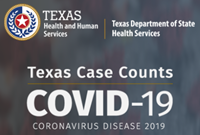Panola College student Sarah Botkin hobbled on crutches into her EMT class on October 13, the victim of a head-on collision the evening before. She had been driving home to Nacogdoches on Highway 315 when her car was struck head-on by a speeding vehicle that was attempting to pass two 18-wheelers on a hilly curve. The crash demolished both vehicles, but no one was seriously injured.
For Botkin and the other students in the Panola College EMT class this wreck on a remote stretch of rural highway, at least 45 minutes away from the nearest hospital, illustrates the important role played by EMT personnel.
“I didn’t have to ride in an ambulance that night, but it was good to know trained emergency responders were there in case someone had been seriously hurt,” she said.
Instructor Ronnie Morton has a long career in emergency response, working as a paramedic in Marshall before joining the faculty at Panola College. With the move into the new Health and Natural Sciences Building in the fall semester, the EMT program has expanded to include the newest technology and equipment available.
“We have an ambulance simulator that is fully outfitted with the same equipment you would find on a real unit,” he said. “It comes with four corner-mounted video cameras that allow me to stand in the classroom and watch my students work on the mannequin inside the unit.”
The visual feed from the video cameras shows up on a wall-mounted television screen so that students in the classroom can see and experience the action inside the unit.
The Panola College Paramedic Program is fully accredited by the Commission on Accreditation of Allied Health Education Programs. Students in the program start out with courses to allow them to become Emergency Medical Technicians. Through continued study and education, they may decide to obtain a Paramedic certification.
After completing the coursework and a required exam from the National Registry of Emergency Medical Technicians, students are able to work as EMTs in fire departments, private emergency medical services, hospitals, and ambulance companies.
The average pay for an EMT is $14.91 per hour, or $31,020 per year, according to the U.S. Bureau of Labor Statistics. Job outlook projects 23 percent growth for EMTs and paramedics, a rate much faster than average.
EMTs and paramedics respond to 911 calls for emergency medical assistance, and are often called upon to perform CPR, treat wounds, assess patients’ conditions, and determine a course of treatment. The Panola College EMT coursework trains students in the use of all equipment inside an ambulance, from backboards and neck braces to oxygen and other medical devices. Some EMTs work as part of medical helicopter flight crews, transporting critically injured patients to a hospital from the scene of an accident or other emergency situation.
EMT-Basic is the entry level position for someone completing the coursework. Students who continue with their education may obtain certification as an Advanced EMT, and ultimately, may become a certified Paramedic.
“Paramedics can provide more advanced care than EMTs,” Morton explained. “Paramedics may give medications orally and intravenously, and they can interpret EKGs, intubate patients, and use other more complex monitors and equipment.”
EMTs and Paramedics work in high-stress situations, but they save lives every day, Morton added.
“By using the ambulance simulator and going through the coursework, my students gain the confidence they need to perform in life or death situations,” he said.
Students currently enrolled in the EMT class come from diverse backgrounds and locations. Kaleb Jones of Carthage helped out in emergency response before signing up for the EMT class. “I just like helping people,” he said. Harold Faucett, IV, of Woodlawn near Marshall currently works as a volunteer fire fighter, and decided to pursue a career in emergency medical services. Joshua Serrano of Elysian Fields is known as “Doc” to his fellow classmates because he is taking pre-med courses along with his EMT class.
Registration for Panola College spring 2016 semester opens on Wednesday, Nov. 4. Students interested in the EMT program must have completed a high school diploma or GED, or be a senior currently enrolled in high school. Students must also have CPR certification from an approved American Heart Association trainer. The CPR certification is available at Panola College.
For more information about the program, contact Kelley Hammond at Panola College, 903-694-4524, or email khammond@panola.edu. Information is also available on the Panola College website at http://www.panola.edu/programs/health-sciences/emt/index.html.
.jpg)



 Click For Louisiana
Click For Louisiana
